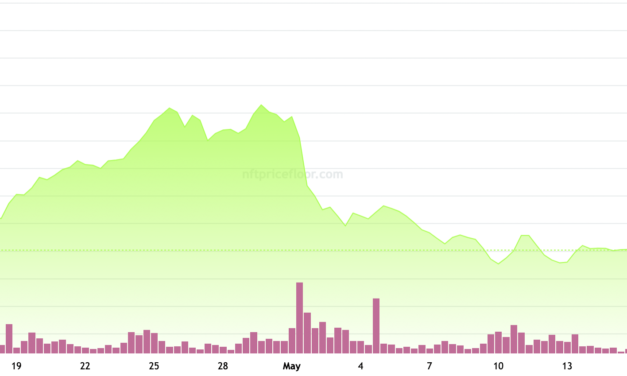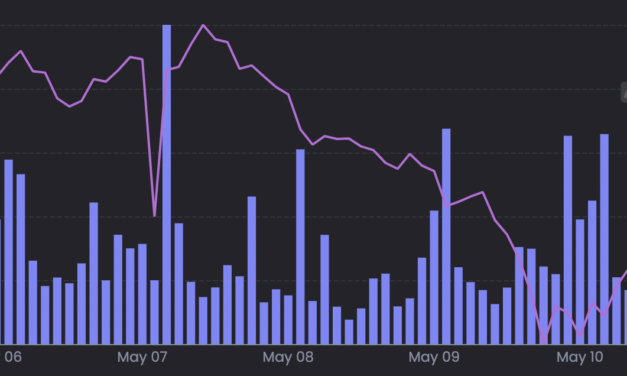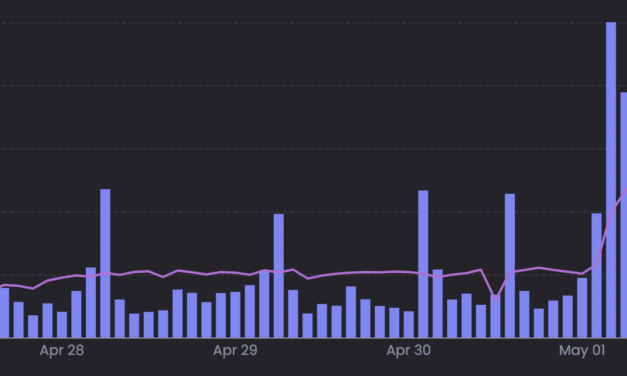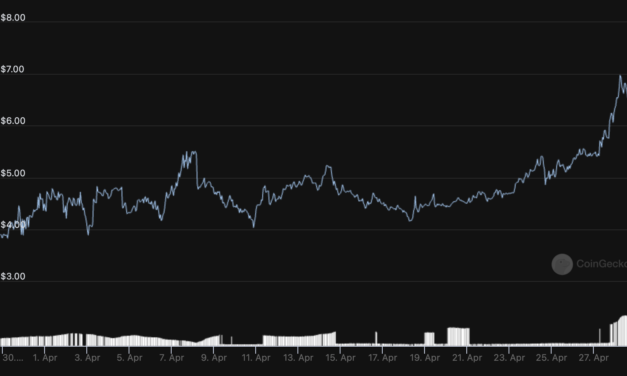NFT prices take a gut punch as the crypto bear market deepens
Without fail, crypto has a way of humbling even the most self-assured and this market is definitely not for the faint of heart. NFT investors have entered what appears to be a bear market and the recent chaos is also impacting community morale. The decline in NFT prices occurred as the United States Federal Reserve raised interest rates, Terra’s Luna and UST-based platforms collapsed and traders came to terms with the reality that the entire sector could be in a bear market. Things aren’t as bad as they were in 2018, but the NFT market isn’t as seasoned. Despite this, investors are already strapping up for potential future profits and ways to survive the current market downturn.Will blue-chip tier NFTs hold the line?Week-after-week, most blue-chip tier NFTs maintained their position at top 10 in total sales volume despite some floor prices dropping nearly 25% in the last 7-days. MAYC 30-day floor price. Source: NFTPriceFloorNotably, Yuga Labs’ Otherdeed NFTs, Bored Ape Yacht Club (BAYC) and Mutant Ape Yacht Club (MAYC), have all seen a decrease in their floor price. BAYC has since recovered from a dip in floor price after the Otherdeed launch, and has seen a minimal 3% decrease in the last 7-days. MAYC has seen nearly a 13% decrease in floor price in the last 7-days. MAYC has been on quite a ride, falling drastically from its peak at 41.2 Ether $120,386 at the time. Currently, MAYC is valued at 19.6 Ether, an approximate 53% discount since MAYCs pump was largely due to their eligibility to claim Yuga Labs’ Otherside’s Otherdeed NFT. Despite all of the uproar and controversy surrounding the Otherdeed NFT drop, the project remains at the top of the charts in total volume even after a 75% drop over the last 7-days.Otherdeed 7-day market cap. and volume. Source: NFTGoThe functionality of these digital lands is still unclear and Otherdeed has seen its floor price in a consistent downward trend. In the last 7-days, the floor price decreased by 1.2%, and since minting, the price has dropped 55% from its all-time high at 7.4 Ether. RTFKT studio’s CloneX floor price has dropped nearly 13% in the last 7-days with volume decreasing slightly over 12%. However, these numbers do not phase the community. Despite the recent dip, the RTFKT ecosystem is buzzing after celebrating the opening of Japanese contemporary artist Takashi Murakami’s “An Arrow Through History” in New York City. The exhibit is currently in the Gagosian Gallery, featuring CloneX inspired pieces along with pieces from Murakami’s first NFT collection, Murakami Flowers.Even with the NFT market cooling, the pricing seems like a blowout sale to some investors looking to capitalize on news. As it would turn out, proclaimed blue-chip, Azuki NFT took the biggest plunge in light of one of its founders, Zagabond openly admitting to their tumultuous past plagued with rugging the CryptoPhunks and Tendies community. I fucked up. After the spaces today, I realized my shortcomings in how I handled the prior projects which I started. To the communities I walked away from, to Azuki holders, and to those who believed in me — I’m truly sorry.1/x— ZAGABOND.ETH (@ZAGABOND) May 11, 2022NFT investors buy the rumors and the newsAs the famous adage goes, traders “buy the rumor, sell the news,” in an attempt to maximize profits. In light of Zagabond’s admission, holders decided to vote with their assets and Azuki’s floop police dipped by 74%.Even with this volatility, Azuki currently ranks at the top of the charts for total sales volume on OpenSea. NFTs are still considered the Wild West, but some investors are learning that everyone’s barometer for morals and ethics is slightly different. After the news sank in, Azuki’s floor price dropped precipitously but certain NFT influencers were quick to jump in and sweep the floors for potential future opportunities. Since May 10, the Azuki floor price has steadily seen an increase above 10 Ether, an impressive 200% increase in total sales volume that occurred after fresh news circulated. Azuki 7-day transaction and liquidity. Source: NFTGoAzukis partner collection, BEANZ, had also taken an 83% reduction in its floor price. Even with the 248% surge in volume, BEANZ, total sales volume has decreased by 64% in the last 7-days. Pre-reveal, BEANZ traded at 6.8 Ether and this price steadily descending post reveal to their current pricing at 1.65 Ether. BEANZ 7-day floor price. Source: NFTPriceFloorOther anticipated anime-inspired drops have surfaced such as PXN: Ghost division NFT, which slid into the top of the charts on OpenSea for volume. Ragnarok Meta also surged for a brief moment in its pre-reveal stage, but rumors that Zagabond was behind the project appear to be weighing on price. The views and opinions expressed here are solely those of the author and do not necessarily reflect the views of Cointelegraph.com. Every investment and trading move involves risk, you should conduct your own research when making a decision.
Čítaj viac






